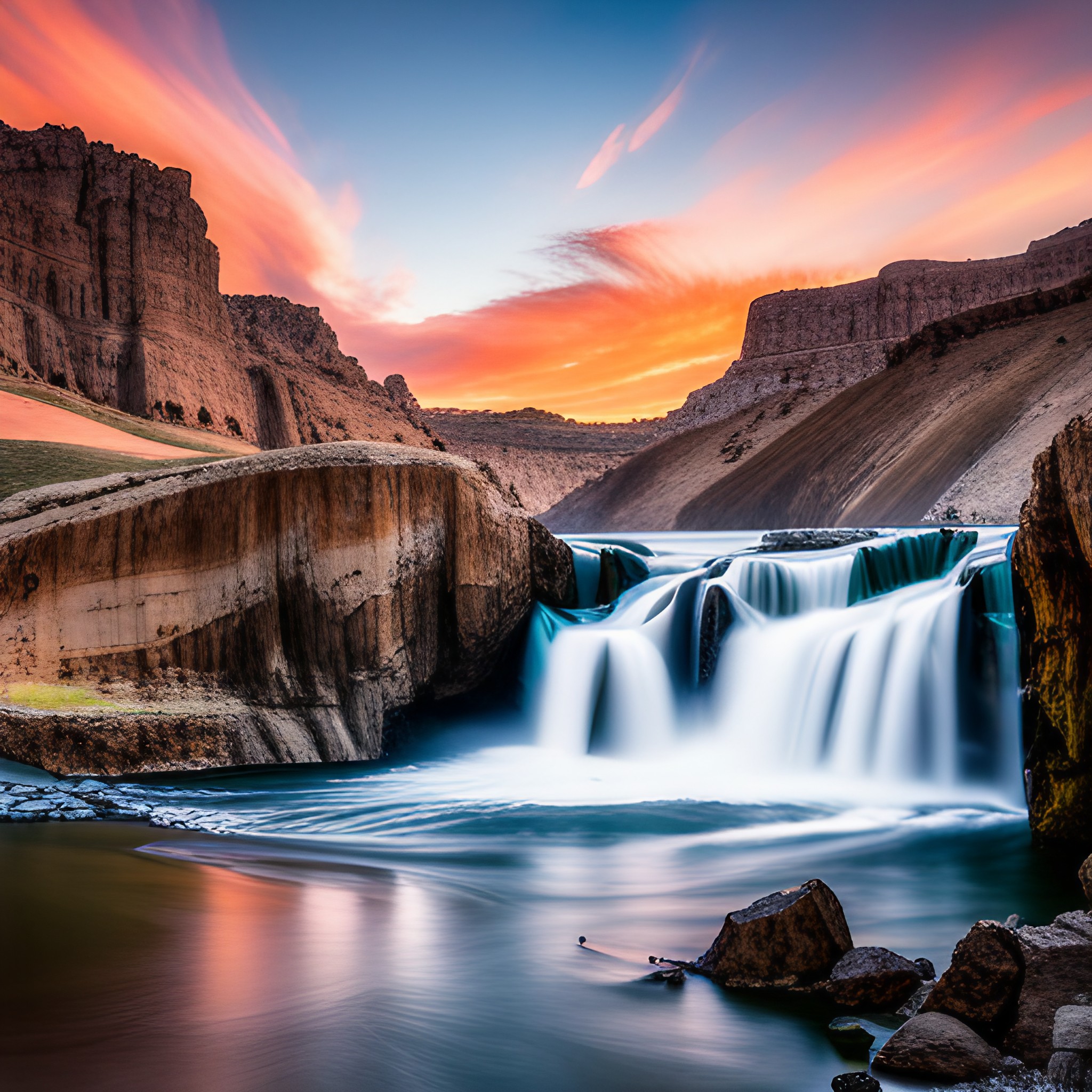This week’s visit to America’s Amazing places takes us to the Snake River in southern Idaho. Here, we’ll visit Shoshone Falls, which is often called the “Niagara of the West. ” We’ll dive into the amazing story of how the falls formed and how they became what they are today. Enjoy the jigsaw puzzle and a journey through time as we explore Shoshone Falls.
The Geological Tale Behind Shoshone Falls

Prehistoric Beginnings
Shoshone Falls’ history is a fascinating tale that dates back millions of years. During this time, intense volcanic eruptions and movement of the earth’s tectonic plates shaped the Pacific Northwest. Snake River Canyon was one of the places affected. However, fire and earth movement weren’t the only things changing the landscape; ice also played a significant role. Glaciers actively transformed the terrain, carving out valleys and laying the groundwork for the eventual creation of Shoshone Falls.
The Role of the Bonneville Flood
Around 14,500 years ago, a catastrophic flood event known as the Bonneville Flood drastically transformed the Snake River Plain’s landscape. This deluge was caused by the breach of Lake Bonneville, which once covered a large part of present-day Utah. The resulting flood played a crucial role in the formation of Shoshone Falls as it appears today. Its incredible force carved deep into the earth, creating distinct features that still dominate the canyon’s surface.
Visiting Shoshone Falls In Recent Times
Early Human Interaction
Long before European settlers set foot in the region, Shoshone Falls was a vital resource and cultural site for the Native American tribes, particularly the Shoshone people. The falls and the surrounding areas provided them with ample fishing opportunities. The breathtaking beauty and immense power of the water also inspired spiritual and cultural reverence.
The Gold Rush Era
The discovery of gold in the Pacific Northwest in the mid-19th century brought a surge of settlers through the region. These settlers brought more changes to southern Idaho. Though the falls themselves played little role in the gold rush, the increased human activity and resource exploitation impacted the surrounding areas. This time also marked the beginning of significant ecological changes in the region.
Modern Times
In the 20th century, the pursuit of harnessing natural resources brought more change. Dams and hydroelectric projects constructed along the Snake River again impacted Shoshone Falls. These endeavors changed the river’s natural course, altering the appearance and ecosystem of the falls. While these projects met the rising demands for electricity and irrigation in the region, they also ignited discussions on environmental sustainability and the conservation of natural marvels like Shoshone Falls.
Final Thoughts and What’s Next
Shoshone Falls tells a story of natural grandeur, human ingenuity, and the constant interplay between preserving nature’s majesty and harnessing its resources. With its deep geological roots and historical significance, this remarkable waterfall continues to play a role in the dynamic forces that shape our world.
That’s it for this week’s visit to Shoshone Falls. Next week, I’ll be back with another jigsaw puzzle and a visit to Illinois and Starved Rock State Park. Did you miss last week’s Friday Morning Post and jigsaw puzzle? If you did, you can use this link to view Pele’s Realm and Hawaii Volcanoes National Park. Or, click here if you want to check out all my posts and puzzles

11:58 for me today
Beautiful picture. My time was 11:10.
7:14
5:48 was my time. I love waterfalls, so this puzzle was lovely to complete.
15.36 very intricate puzzle!
8;31 Thank you!
5:40 Happy Easter (if you celebrate)
9:15
8:47
7:36
6:41 for me this slow morning! wish i could hear the fall of the water….